-
 Bitcoin
Bitcoin $82,594.5712
0.40% -
 Ethereum
Ethereum $1,784.9704
0.39% -
 Tether USDt
Tether USDt $0.9995
-0.02% -
 XRP
XRP $2.1068
5.25% -
 BNB
BNB $591.1127
1.16% -
 USDC
USDC $1.0000
0.00% -
 Solana
Solana $117.0477
2.61% -
 Dogecoin
Dogecoin $0.1668
5.44% -
 TRON
TRON $0.2407
2.95% -
 Cardano
Cardano $0.6468
3.65% -
 UNUS SED LEO
UNUS SED LEO $9.4017
0.10% -
 Toncoin
Toncoin $3.3780
-5.26% -
 Chainlink
Chainlink $12.5724
0.81% -
 Stellar
Stellar $0.2583
1.78% -
 Avalanche
Avalanche $17.9801
-0.59% -
 Sui
Sui $2.2157
-1.98% -
 Shiba Inu
Shiba Inu $0.0...01219
0.52% -
 Hedera
Hedera $0.1625
3.95% -
 Polkadot
Polkadot $4.0562
3.40% -
 Litecoin
Litecoin $83.3634
1.79% -
 MANTRA
MANTRA $6.3429
1.06% -
 Bitcoin Cash
Bitcoin Cash $299.8989
1.04% -
 Bitget Token
Bitget Token $4.5113
0.27% -
 Dai
Dai $0.9999
0.00% -
 Ethena USDe
Ethena USDe $0.9994
-0.03% -
 Monero
Monero $215.9415
1.63% -
 Hyperliquid
Hyperliquid $11.5893
2.64% -
 Uniswap
Uniswap $5.8018
0.96% -
 Pi
Pi $0.5222
-7.36% -
 Pepe
Pepe $0.0...07044
7.37%
What are ICOs, IDOs, and IEOs?
ICOs, IEOs, and IDOs are crypto fundraising methods with varying risks: ICOs are decentralized and risky, IEOs safer via exchanges, IDOs decentralized but prone to scams.
Mar 29, 2025 at 03:14 pm
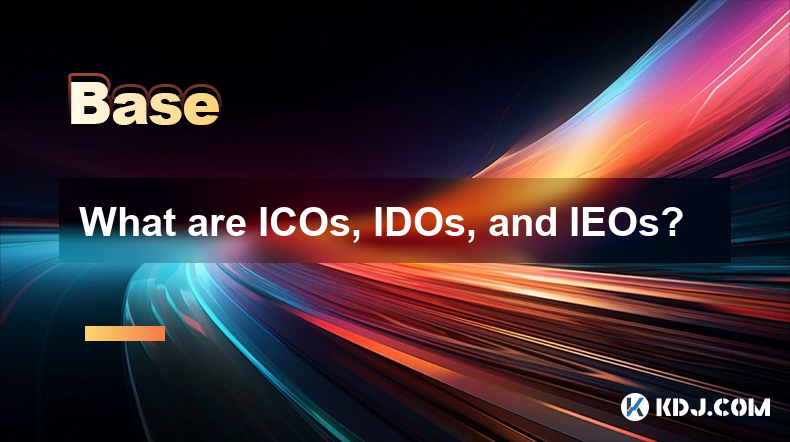
Understanding the Landscape of Cryptocurrency Funding
Initial Coin Offerings (ICOs), Initial DEX Offerings (IDOs), and Initial Exchange Offerings (IEOs) are all methods for startups to raise capital using cryptocurrencies. While they share the goal of funding projects, they differ significantly in their execution and associated risks. Understanding these differences is crucial for both investors and project developers.
Initial Coin Offerings (ICOs)
ICOs were among the earliest methods of cryptocurrency fundraising. They involved a project team creating and selling their own cryptocurrency tokens directly to the public in exchange for established cryptocurrencies like Bitcoin or Ethereum. These ICOs were often conducted on the project's own website or through a simple smart contract. This lack of centralized oversight meant a higher risk of scams and fraudulent projects. Regulations were largely absent, creating a Wild West environment.
- How ICOs Worked: A project team would create a whitepaper outlining their project and tokenomics.
- Investment: Investors would send cryptocurrency to a designated address in exchange for the new tokens.
- Risks: Lack of regulation led to many scams and projects failing to deliver on their promises.
Initial Exchange Offerings (IEOs)
IEOs represent a significant improvement over ICOs in terms of security and legitimacy. Instead of selling tokens directly to the public, IEOs leverage established cryptocurrency exchanges to host the token sale. This provides a layer of vetting and due diligence, reducing the risk of scams. Exchanges typically perform KYC (Know Your Customer) checks on both the project team and investors, adding a level of regulatory compliance. The exchange's reputation is also on the line, incentivizing them to carefully select projects.
- How IEOs Worked: The project team partners with an exchange. The exchange lists the new token and facilitates the sale.
- Investment: Investors purchase tokens through the exchange platform.
- Risks: While safer than ICOs, the risk of project failure still exists. The exchange's vetting process is not foolproof.
Initial DEX Offerings (IDOs)
IDOs are a more decentralized approach to fundraising, utilizing decentralized exchanges (DEXs) rather than centralized exchanges. This decentralization aims to reduce reliance on intermediaries and potentially offer greater accessibility to investors. However, IDOs also present unique challenges, particularly regarding security and liquidity. The lack of centralized control can make it more difficult to verify project legitimacy and prevent fraudulent activities.
- How IDOs Worked: Projects list their tokens on a DEX, often using automated market makers (AMMs).
- Investment: Investors purchase tokens directly through the DEX using various methods.
- Risks: Increased potential for rug pulls and scams due to the decentralized nature. Liquidity can also be an issue.
Comparing ICOs, IEOs, and IDOs
The key differences lie in the level of centralization and the associated risks. ICOs were highly decentralized and risky. IEOs introduced a degree of centralization through established exchanges, mitigating some risks. IDOs attempt to combine decentralization with the fundraising benefits of ICOs and IEOs, but often inherit the increased risk associated with decentralized platforms. Each model has its own set of advantages and disadvantages, and the best approach depends on the specific project and its goals.
The Evolution of Cryptocurrency Funding Models
The progression from ICOs to IEOs and IDOs reflects a broader trend in the cryptocurrency space – a movement towards greater regulation and security while attempting to maintain the decentralized ethos. Each model presents a unique balance between these competing priorities. The future of cryptocurrency funding may see the emergence of new models that further refine this balance.
Understanding Tokenomics
Tokenomics, the economics of a cryptocurrency token, plays a critical role in all three funding models. A well-designed tokenomic model is essential for the long-term success of a project. This includes aspects such as token utility, distribution, inflation rate, and governance mechanisms. Investors should carefully examine the tokenomics of any project before investing.
Due Diligence and Risk Management
Regardless of the funding model, thorough due diligence is crucial for investors. This includes researching the project team, examining the whitepaper, and understanding the tokenomics. Investors should always be wary of projects promising unrealistic returns or lacking transparency. Diversification is also a key element of risk management in the volatile cryptocurrency market.
Regulatory Landscape
The regulatory landscape surrounding ICOs, IEOs, and IDOs is constantly evolving. Different jurisdictions have adopted varying approaches, and the lack of clear global standards creates challenges for both projects and investors. Staying informed about the latest regulatory developments is essential.
Frequently Asked Questions
Q: What is the safest method among ICOs, IEOs, and IDOs?
A: Generally, IEOs are considered safer than ICOs and IDOs due to the involvement of established exchanges that provide a degree of vetting and regulatory compliance. However, no method is entirely risk-free.
Q: Are ICOs still prevalent?
A: ICOs are significantly less common than they were in their peak years due to increased regulatory scrutiny and the rise of IEOs and IDOs. Many projects now prefer the perceived safety and legitimacy of IEOs or the decentralization of IDOs.
Q: What are the advantages of IDOs over IEOs?
A: IDOs offer a more decentralized approach, potentially reducing reliance on centralized intermediaries and potentially offering greater accessibility to investors. However, they also carry increased risks.
Q: How can I protect myself from scams in these funding models?
A: Thorough due diligence is key. Research the project team, read the whitepaper carefully, understand the tokenomics, and be wary of unrealistic promises. Only invest what you can afford to lose.
Q: What is the role of a whitepaper in these funding models?
A: The whitepaper serves as a detailed description of the project, its goals, technology, team, and tokenomics. It's a crucial document for investors to assess the project's viability and potential.
Disclaimer:info@kdj.com
The information provided is not trading advice. kdj.com does not assume any responsibility for any investments made based on the information provided in this article. Cryptocurrencies are highly volatile and it is highly recommended that you invest with caution after thorough research!
If you believe that the content used on this website infringes your copyright, please contact us immediately (info@kdj.com) and we will delete it promptly.
- Chainlink (LINK) Is Trading at a Critical Level as Market Data Points to Heightened Volatility and Investor Activity.
- 2025-04-04 22:10:12
- Supermicro Systems with the NVIDIA B200 Outperform the Previous Generation by 3X
- 2025-04-04 22:10:12
- tion: The Last Of Us season two is right around the corner, and Insert Coin has just dropped all-new merch officially tied to the show and the games to celebrate.
- 2025-04-04 22:05:12
- Scopely Loves Giving Monopoly GO Players Exciting New Ways to Personalize Their Game Boards
- 2025-04-04 22:05:12
- 5 Valuable Coins From the 1960s That Might Be Hiding in Your Coin Jar
- 2025-04-04 22:00:12
- Why gold still matters
- 2025-04-04 22:00:12
Related knowledge

Why is the oracle called the bridge between blockchain and the real world?
Apr 04,2025 at 04:00am
The concept of an oracle in the cryptocurrency and blockchain world is crucial for understanding how these decentralized systems interact with external data. The oracle is often referred to as the bridge between blockchain and the real world because it serves as a vital intermediary that fetches, verifies, and transmits off-chain data to the on-chain en...

What role does the Merkle tree play in the blockchain? Why can it verify data integrity?
Apr 04,2025 at 01:29pm
The Merkle tree plays a crucial role in the blockchain, primarily due to its ability to efficiently and securely verify data integrity. This article will delve into the structure of a Merkle tree, its implementation in blockchain, and how it ensures the integrity of data. Understanding the Structure of a Merkle TreeA Merkle tree, also known as a hash tr...
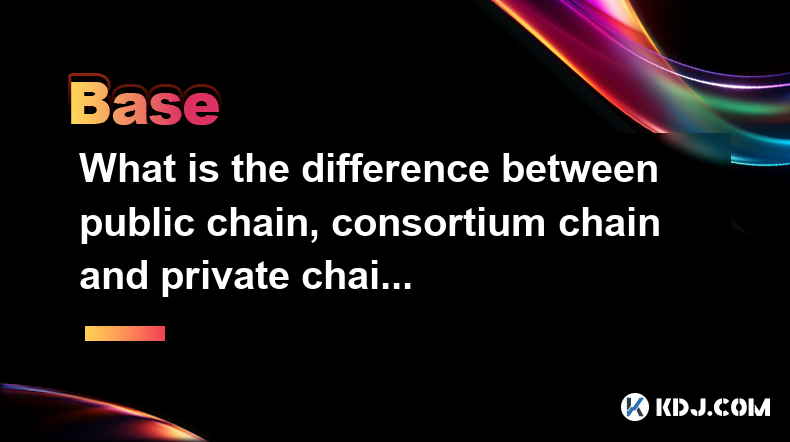
What is the difference between public chain, consortium chain and private chain? What scenarios are suitable for each?
Apr 04,2025 at 09:21pm
In the world of blockchain technology, understanding the differences between public chains, consortium chains, and private chains is crucial for selecting the right type of blockchain for specific applications. Each type of blockchain has its own unique characteristics and use cases, which we will explore in detail. Understanding Public ChainsPublic cha...
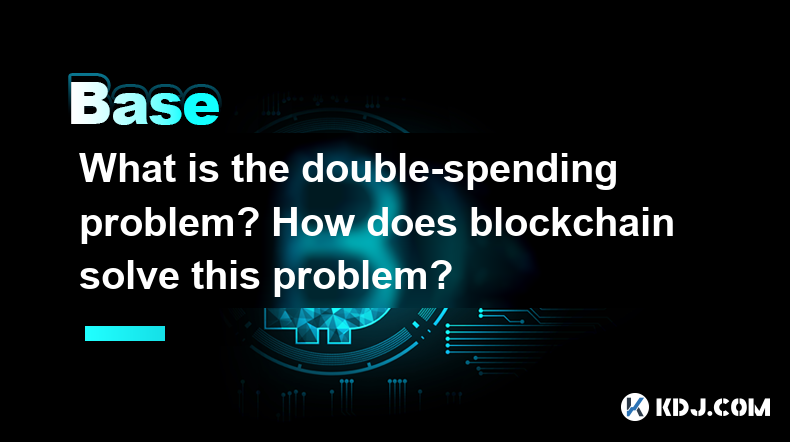
What is the double-spending problem? How does blockchain solve this problem?
Apr 04,2025 at 09:07am
The double-spending problem is a significant challenge in the realm of digital currencies. Double-spending refers to the potential for a digital currency to be spent more than once. This issue arises because digital files, unlike physical cash, can be easily duplicated. If not addressed, double-spending could undermine the integrity and trust in any dig...
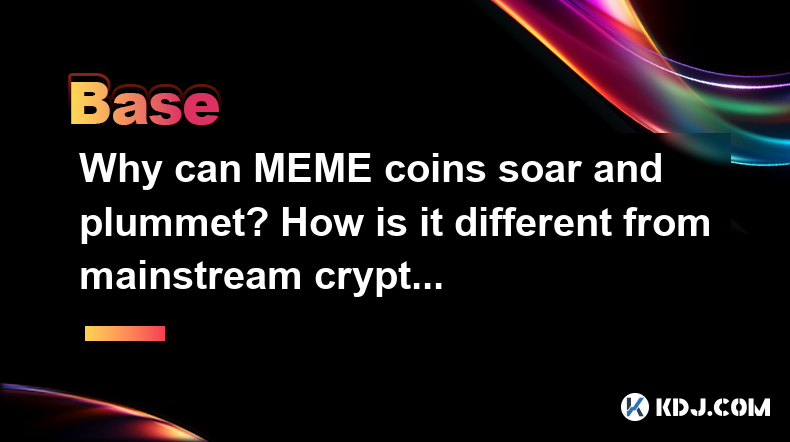
Why can MEME coins soar and plummet? How is it different from mainstream cryptocurrencies?
Apr 04,2025 at 03:07pm
The world of cryptocurrencies is vast and diverse, with a wide range of digital assets that cater to different needs and interests. Among these, MEME coins have carved out a unique niche, often experiencing dramatic price fluctuations that can both soar and plummet in a short period. This phenomenon, while intriguing, differs significantly from the beha...
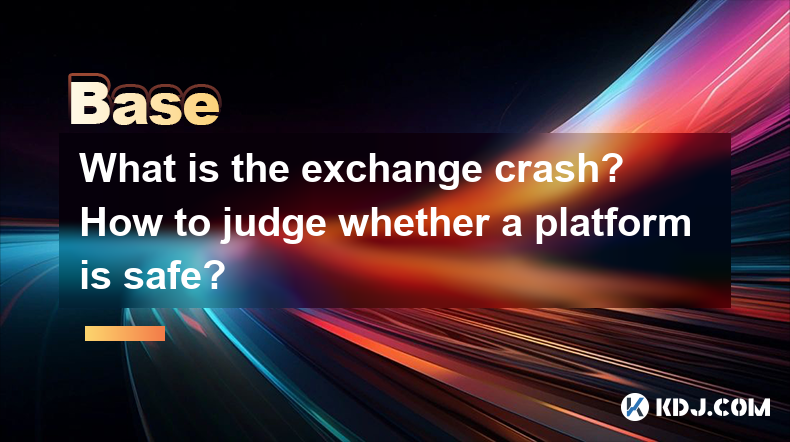
What is the exchange crash? How to judge whether a platform is safe?
Apr 04,2025 at 05:07pm
An exchange crash refers to a sudden and severe disruption in the operations of a cryptocurrency exchange platform, leading to significant financial losses for users and often resulting in the platform's inability to continue functioning. Such crashes can stem from various causes, including cybersecurity breaches, technical failures, or insolvency. Unde...

Why is the oracle called the bridge between blockchain and the real world?
Apr 04,2025 at 04:00am
The concept of an oracle in the cryptocurrency and blockchain world is crucial for understanding how these decentralized systems interact with external data. The oracle is often referred to as the bridge between blockchain and the real world because it serves as a vital intermediary that fetches, verifies, and transmits off-chain data to the on-chain en...

What role does the Merkle tree play in the blockchain? Why can it verify data integrity?
Apr 04,2025 at 01:29pm
The Merkle tree plays a crucial role in the blockchain, primarily due to its ability to efficiently and securely verify data integrity. This article will delve into the structure of a Merkle tree, its implementation in blockchain, and how it ensures the integrity of data. Understanding the Structure of a Merkle TreeA Merkle tree, also known as a hash tr...

What is the difference between public chain, consortium chain and private chain? What scenarios are suitable for each?
Apr 04,2025 at 09:21pm
In the world of blockchain technology, understanding the differences between public chains, consortium chains, and private chains is crucial for selecting the right type of blockchain for specific applications. Each type of blockchain has its own unique characteristics and use cases, which we will explore in detail. Understanding Public ChainsPublic cha...

What is the double-spending problem? How does blockchain solve this problem?
Apr 04,2025 at 09:07am
The double-spending problem is a significant challenge in the realm of digital currencies. Double-spending refers to the potential for a digital currency to be spent more than once. This issue arises because digital files, unlike physical cash, can be easily duplicated. If not addressed, double-spending could undermine the integrity and trust in any dig...

Why can MEME coins soar and plummet? How is it different from mainstream cryptocurrencies?
Apr 04,2025 at 03:07pm
The world of cryptocurrencies is vast and diverse, with a wide range of digital assets that cater to different needs and interests. Among these, MEME coins have carved out a unique niche, often experiencing dramatic price fluctuations that can both soar and plummet in a short period. This phenomenon, while intriguing, differs significantly from the beha...

What is the exchange crash? How to judge whether a platform is safe?
Apr 04,2025 at 05:07pm
An exchange crash refers to a sudden and severe disruption in the operations of a cryptocurrency exchange platform, leading to significant financial losses for users and often resulting in the platform's inability to continue functioning. Such crashes can stem from various causes, including cybersecurity breaches, technical failures, or insolvency. Unde...
See all articles




















































































